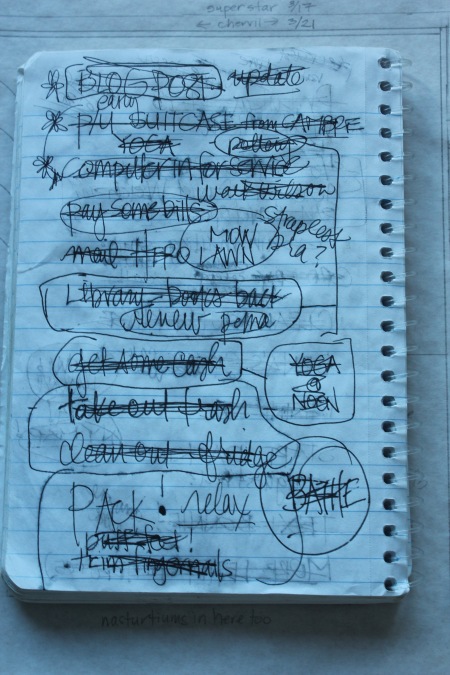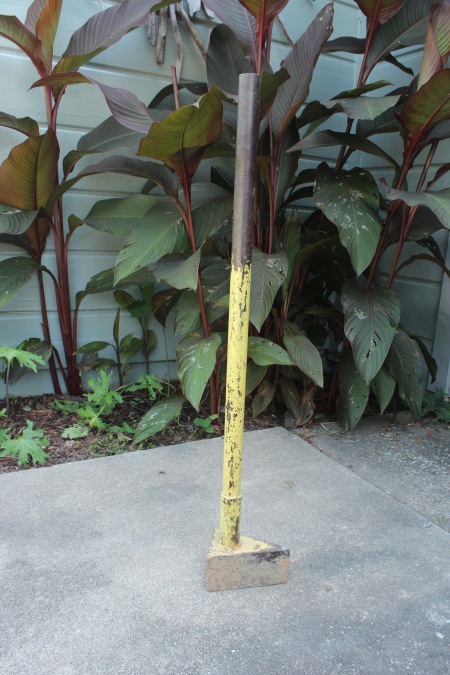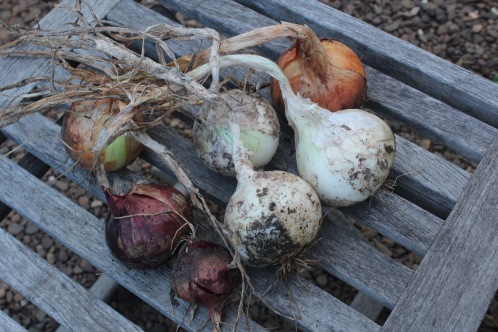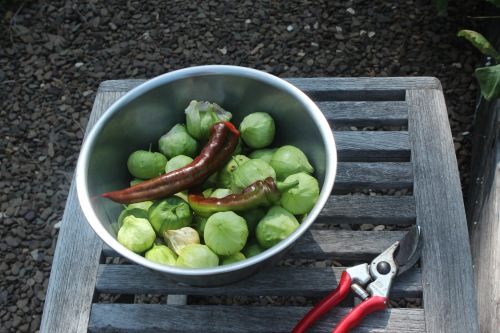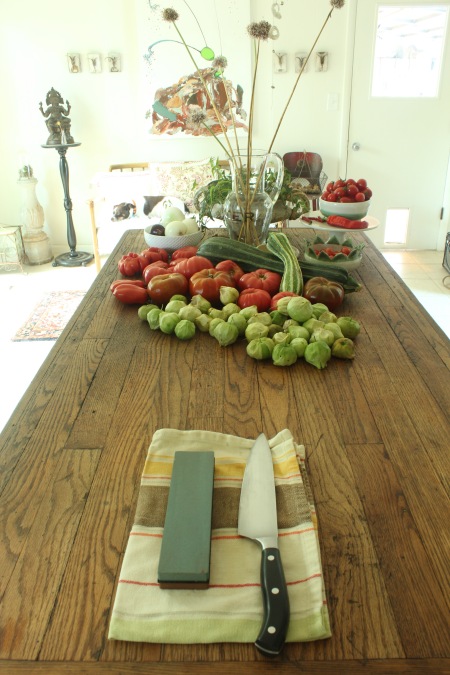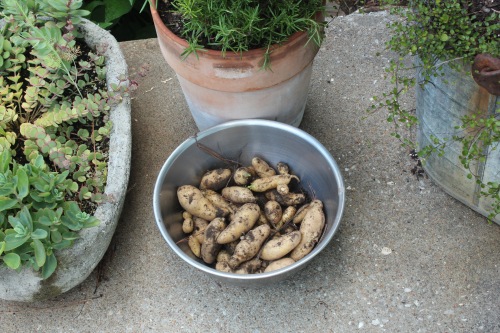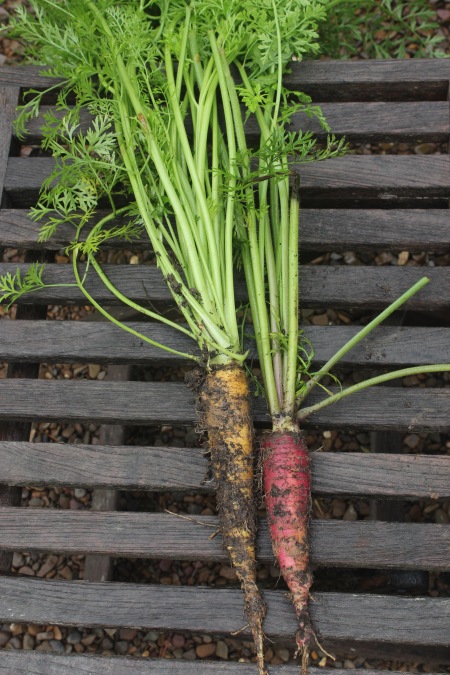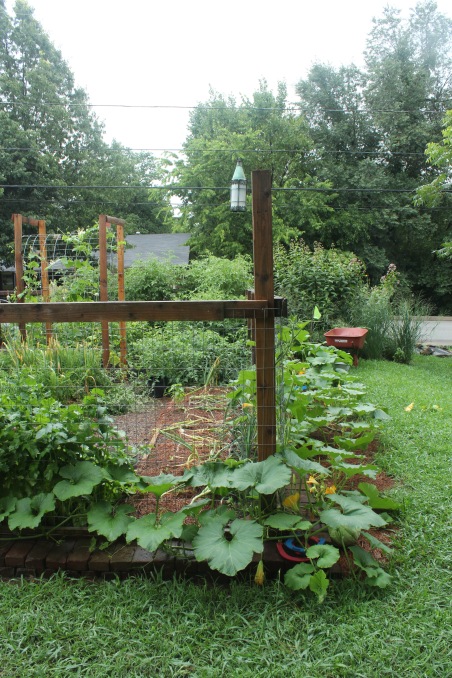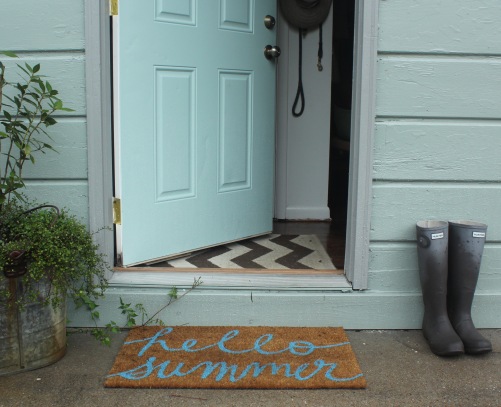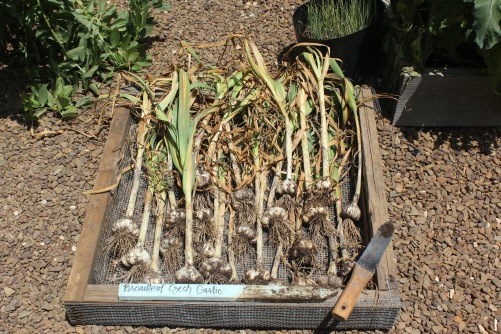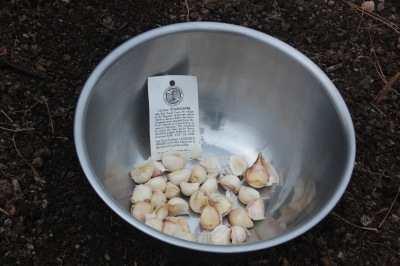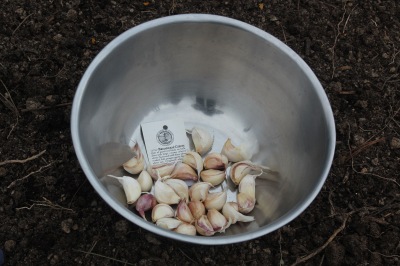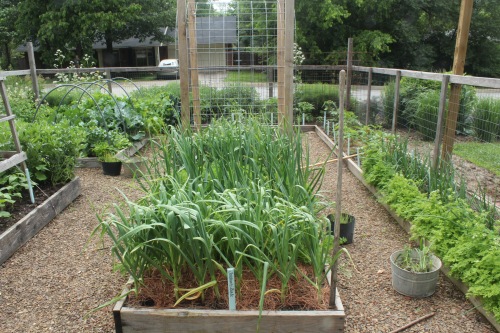As a gardener, going out of town for a week in July is like living through a time-warp. Is there a better word for that? For the gap between your last experience of a thing and the change that thing endures in the meantime? For instance seeing someone you haven’t seen in a while who has gained or lost a lot of weight. Or cut their hair. Or aged. Children who were this tall the last time you saw them. Something that has endured so much change that you are taken aback. Sucked into the now from wherever you were like Christopher Reeves in Somewhere in Time when he pulls the penny out of his pocket and love is lost forever. That passage of time and change needs a name. A poetic name!
“Life” is not quite what I had in mind.
Well my garden did that while I was away. I ran out of time to mow my yard and then it poured the night before I left. I circled it on my list, code for: to be dealt with later.
Dealt with indeed. While I was gone, summer in Arkansas happened. By the time I got home, it was a foot high and covered with seed heads. I’m surprised there wasn’t a code compliance sign in my yard!
Now, I have a lawn mower. And for that I am grateful. It is not the mower of my dreams, but we know each other well enough that by working together we can get the job done. Which does not mean I have not yelled expletives about my mother at it.
Sorry mom.
Sorry neighbors.
Or wanted to take this cool sledge hammer to it.
Talk about missed opportunities for a zen moment.
But, if I can get it started without dislocating my shoulder, and if I lift the hatch on the back at the end of every row to allow the grass to shoot out onto my sweaty sunscreen covered leg, making me look like a female Sasquatch, and if I buck it up onto its back wheels every twenty seconds or so when it starts to sputter out, together we can get the job done.
This, however, was more than we had ever dealt with together.
So when it, very vocally, said “Forget you, I’m taking a break”, I took that opportunity to rake up the extra grass and dump it on my compost heap. Only to start the whole process all over again.
In this manner I cussed and sputtered and bucked and raked my sweat-drenched, grass-covered Sasquatch way through my foot-high grass for all the neighborhood to witness. And over the course of two days the yard that I can usually mow in twenty minutes was finally tamed.
And now a week later it needs it again!
Talk about the importance of keeping up with things!
I also came back to a mountain of tomatoes, potatoes, green beans, tomatillos, peppers, onions, hard-neck garlic, beets, carrots, zucchini as big as my forearm, and kale covered with harlequin beetles.
Do you know these guys? Murgantia histrionica. Whenever I see these beautiful beetles, I feel like King Lear, “Oh, I have ta’en too little care of this!” Rebuked, as they tend to show up when things are outside their window of seasonality and therefore stressed. The compost heap for you!
Eventually though, we managed to get things a little more under control.
We harvested potatoes.
And dismantled the potato box.
These are a variety called Yellow Finn that we grew for the first time this year.
We threw some on the grill wrapped in tin foil and they were astoundingly good. Creamy and buttery and rich and delicious. Truly stellar and highly recommended.
We also harvested green beans, onions, and tomatillos. Salsa verde, and soon!
So now that the garden is a bit more manageable – although there’s still plenty of cleaning up and fall planting to be done – the overwhelm has moved indoors. What to do with all this bounty!?
First things first. Sharpen your knives!
Because we are in the sweet spot. Where a luscious summer meal can be made of a perfectly ripe heirloom tomato sprinkled with salt. But to unleash that goodness you need a really sharp knife.
And to get a really sharp knife you need a whetstone. I got mine in New York, but I chose it because it was made in Arkansas and I was homesick. I have since discovered that the finest natural whetstones are made out of novaculite, which is sedimentary rock composed of microcrystalline quartz. Novacula means razor stone. And the purest novaculite is found in the Ouachita Mountains near Hot Springs, Arkansas. Arkansas sharpening stones are the benchmark for oil stones and have been since native Americans used them on their arrowheads. Pretty cool, huh? There are several grades of sharpening stones, and many whetstones have two sides. Start with the coarse one and finish with the finer one, kind of like an emory board. Many sources I referenced recommended using a honing oil with your whetstone, but I’ve always used water and it has worked just fine.
It’s important to soak your whetstone before you use it. I try to soak mine for at least fifteen minutes.
Once it’s soaked, get yourself set up with a towel and your knife.
It’s good to have some water nearby to keep everything lubricated. If you google knife sharpening, people are all over the place with it and I think they make it seem much more challenging than it really is – people on the internet can be like that. I’ll refer you to this short video (https://www.youtube.com/watch?v=bAmxc_U2dGs), which demonstrates it quite concisely – if you find the music annoying, just turn off the volume. The important factor is consistency. A consistent 20º angle, consistent pressure, and being consistent on both sides of your knife. You could certainly have it done professionally, but it’s your knife and it’s not difficult. I believe in you. And as you know, a dull knife in the kitchen is far more dangerous than a sharp one. Buy a good quality chef’s knife and take good care of it. Don’t put it in the dishwasher, keep it honed. and it should last your whole life.
And the livin’ is easy!

